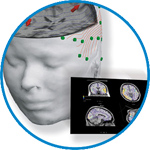- Home
- About ANT
-
Products

asa
asa is a highly flexible EEG/ERP and MEG analysis package with a variety of source reconstruction, signal analysis and MRI processing features.
.jpg)
eego mylab
The new frontier in multimodal brain research. With up to 16 kHz sampling rate, 256 EEG channels and unique software features, eego mylab gives you an unprecedented in-depth understanding of the human brain.

eego sports
eego sports offers complete freedom to collect high-density EEG data, bipolar EMG signals, and a variety of physiological sensor data, wherever and whenever required, with publish quality data in less than 15 minutes!

waveguard net
The waveguard net sets a new standard for research applications requiring high-density EEG data acquisition with quick preparation time, high flexibility, and subject comfort.

visor2
Our new and upgraded visor2 solutions integrate all the latest technologies for navigated rTMS, dual-coil navigation support, EEG-TMS recordings and pre-surgical evaluation for the highest quality in research and clinical procedures.

powerMAG ANT
The PowerMAG ANT 100 rTMS stimulator is designed for the specific needs of high-end TMS applications. Powerful high-frequency TMS as well as high precise single pulse and repetitive pulse protocols are combined in one single device.

xensor
xensor offers the solution for digitization of 3D electrode positions. xensor takes care of the whole procedure; it records, visualizes and stores positions acquired with a dedicated digitizer.

waveguard original
waveguard original is the cap solution for EEG measurements compatible with fMRI, MEG and TMS system. Use of active shielding guarantees performance in even the most demanding environments.

waveguard connect
waveguard connect EEG caps are a perfect match for hospitals and institutes aiming at reliable EEG, maximum uptime and great patient comfort! For optimal signal quality, the electrodes are made of pure, solid tin.

waveguard touch
waveguard touch is a dry electrode EEG cap. The unique Ag/AgCl coated soft polymer electrodes provide stable, research-grade EEG signals while maintaining subject comfort. The combination of these innovative dry electrodes and the industry-leading waveguard cap makes waveguard touch the best solution for dry EEG.

smartmove
smartmove allows planning of a complete TMS session ahead by defining stimulation sites based on anatomical MRI information and functional information like fMRI, PET or EEG/MEG.
Stay - References
- Support
- Events
- News
- Contact Us
You are here
Mu rhythm, visual processing and motor control.
Mu rhythm, visual processing and motor control.
OBJECTIVE:
The Mu-rhythm has been proposed as both an inhibitor ("idling hypothesis") and as a promoter ("processing hypothesis") of information processing in the primary sensory-motor cortex (SM-C). We tested these possibilities by analyzing the phase-locked and non-phase-locked Mu response during the execution of a visual-motor task.
METHODS:
EEG was recorded in 13 subjects during the visual presentation of an arrow which indicated the direction of the finger motion to be executed after the presentation of a second stimulus. The EEG activity in the α-range (Mu-α) and β-range was evaluated by a method which segregated the phase-locked and the non-phase-locked response. The event-related Mu-response observed during this task was compared with that computed when the subjects saw the same arrow-stimuli but did not perform any task (passive test).
RESULTS:
Visual stimuli induced a phase-locked α-oscillation which began ≈50ms after the stimulus onset and persisted for about 150-200ms. This response was much higher when stimuli were used for motion planning than when they were passively observed, and was more marked in the α-range than in the β-range. The phase-locked response was followed by a persistent decrease of the non-phase-locked Mu-activity similar to that previously reported with the event-related desynchronization/synchronization method.
CONCLUSIONS:
The Mu-wave is not a single phenomenon. It was segregated here into two components, one with an early and short-lasting phase locked-response to visual stimuli, which increased during the task execution, and the other without phase-locked responses which persistently decreased during the task execution. SIGNIFICANCE: Present data suggest that Mu-activity performs a double action, increasing the information processing of one task (according to the "processing hypothesis") and decreasing the computation of other potentially interfering tasks (according to the "idling hypothesis"), with task selection being achieved by choosing their phase-association to the Mu-wave.

 Read more
Read more.jpg)




